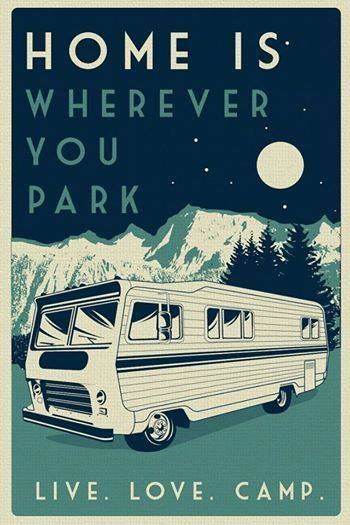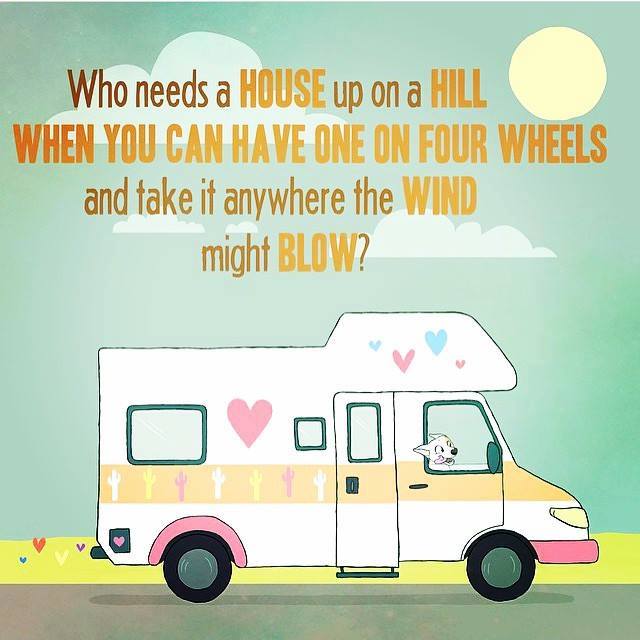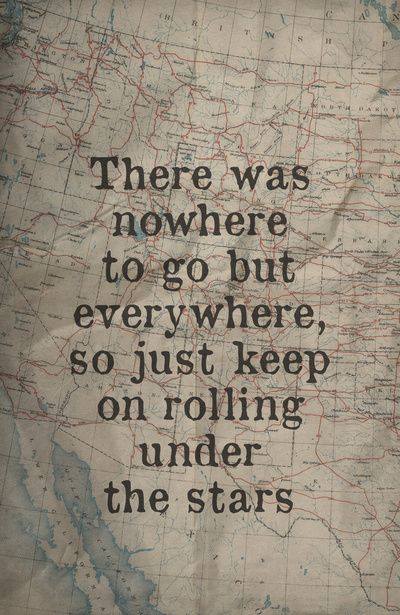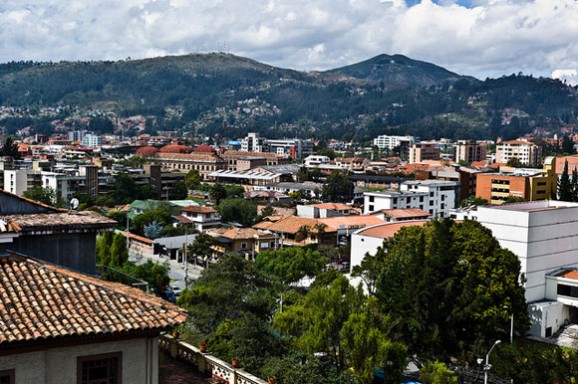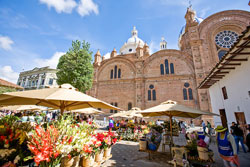
This is my top 15 list of must try street foods in Ecuador. There are some Ecuadorian street foods that you will find in every region (Coast, Highlands, Amazon, Islands) of Ecuador and almost every city or small town. There are also some street foods that are very regional and unique to specific cities. There are many items that are not on this list, so it will be no surprise if I get comments about foods I missed. In fact, I’m sure that right after I post this, I’ll think of something that should have been on the list. I included some of the most popular and easier to find dishes, but left off some of the dishes that are extremely city or holiday specific, and harder to find. I also left out foods that you will find at Ecuadorian bakeries, but are also occasionally sold by street vendors (rosquitas, roscones, bizcochuelos, quesadillas quitenas, suspiros, alfajores, mazapanes, and others). I will include those in a post later on about Ecuadorian baked treats.
 One of the best places to find delicious street food is at ferias or local fairs and fiestas (local festivities). Other popular places include markets, main plazas on weekends, beach towns, bus stops, and at the exits of local schools. There are some traditional dishes that are popular at markets that I didn’t include in this list, like hornado, fritada or llapingachos in the Highlands or encebollado fish soup in the Coast. This list of popular Ecuadorian street food is mainly for foods that are very portable and can be eaten while walking in the street or around the fair – the others usually require you to sit down. Keep in mind that not all street food is created equal and if you are concerned with both the quality and health of eating street food, then it’s best to get recommendations from locals on which are good (and safe) places to try these dishes. I have yet to get sick from eating Ecuadorian street food (knock on wood), but I was born/grew up there (and therefore have some sort of immunity), but when I’m visiting a town I don’t well, I usually ask friends or locals (ask local store or tienda owners, someone who works at the hotel you’re staying, or even the taxi driver) for places that are good.
One of the best places to find delicious street food is at ferias or local fairs and fiestas (local festivities). Other popular places include markets, main plazas on weekends, beach towns, bus stops, and at the exits of local schools. There are some traditional dishes that are popular at markets that I didn’t include in this list, like hornado, fritada or llapingachos in the Highlands or encebollado fish soup in the Coast. This list of popular Ecuadorian street food is mainly for foods that are very portable and can be eaten while walking in the street or around the fair – the others usually require you to sit down. Keep in mind that not all street food is created equal and if you are concerned with both the quality and health of eating street food, then it’s best to get recommendations from locals on which are good (and safe) places to try these dishes. I have yet to get sick from eating Ecuadorian street food (knock on wood), but I was born/grew up there (and therefore have some sort of immunity), but when I’m visiting a town I don’t well, I usually ask friends or locals (ask local store or tienda owners, someone who works at the hotel you’re staying, or even the taxi driver) for places that are good.
 In no particular order, here are the top 15 Ecuadorian street foods that I recommend you try when you visit our beautiful country:
In no particular order, here are the top 15 Ecuadorian street foods that I recommend you try when you visit our beautiful country:
Empanadas: We love empanadas in Ecuador! The most common ones that you will find in the streets, especially in the Sierra or Highlands, are called empanadas de viento, these are fluffy fried cheese empanadas that are sprinkled with sugar. Other popular street empanadas are empanadas de morocho, made with thin corn dough and stuffed with cheese or meat, and the amazing empanadas de verde made with green plantain dough and also with fillings of cheese, shrimp, chicken, or meat picadillo.
Ecuadorian fried cheese empanadas de viento

Carne en palito, chuzos or pinchos: These thin beef skewers or meat on a stick are very popular at fairs and local fiestas. They are sometimes served with a piece of chorizo and/or ripe plantain on the tip. A bonus, most carts selling carne en palito also sell grilled corn on the cob or choclos asados. Both the meat and corn are usually served drizzled with a delicious cilantro queso fresco sauce.
Ecuadorian carne en palito, pinchos or chuzos cart at the fair

Huevitos chilenos: I think of these as Ecuadorian donut holes, except better and more addictive than the traditional American donut holes. These can almost always be found at ferias/fairs and local street parties.
Huevitos chilenos preparation in Ecuador

Mangos/grosellas/ovos or ciruelas con sal or pretty much anything green and sour with salt: I don’t know a single Ecuadorian who doesn’t experience a mouthwatering sensation at the mention of mangos or grosellas con sal. Grosellas are also called Otaheite gooseberry and is small green cherry like fruit that is very acid and tart – the perfect combination with salt. Ovos (name in the Coast) or ciruelas/siriguela (name in the Highlands) look like large olives and are also known as jocotes in Mexico/Central America – they are delicious and sweet when ripe, but also very delicious when they are green.
Green mango with salt

Green mangos and ciruelas or ovos with salt Grosellas con sal

Espumillas: Don’t let these meringue cream desserts fool you, they are served in ice cream cones, but aren’t cold. The most popular flavor is guava (called guayaba in Spanish), but you can also find mora (blackberry), strawberry, and other flavors.
Ecuadorian street food – espumillas

Helados or ice cream: We also love ice cream in Ecuador, from the famous helados de paila or fruit sorbets made by hand in large copper bowls, to the more humble helado de palo or basic popsicle that almost every little tienda has for sale. Some of my favorite helado de paila flavors are naranjilla (also known as lulo), mora or blackberry, maracuya or passion fruit, taxo (known as banana passion fruit), and ron pasas (rum raisin). My favorite helados de palo flavors are the basic helado de leche con canela o cinnamon milk, mixed fruit salad, coconut, and helados de gelatina or gelatin ones. I also highly recommend helados de Salcedo, a layered popsicle of multiple flavors including cream, naranjilla, mora, taxo, and more.
Helado de paila ice cream preparation in Ecuador

Ecuadorian street food – Helados de paila Naranjilla or lulo ice cream in EcuadorEcuadorian helados de coco
 Chochos, chifles and tostado: Chochos (lupini beans), chifles (thin green plantain chips) and tostado (Andean corn nuts), and maybe popcorn, are the Ecuadorian equivalent of the chips and salsa that you automatically served at most Mexican and Tex-Mex restaurants in the US. And our hot sauce equivalent is either aji de tomate de arbol, a salsa made with tree tomatoes or tamarillos, or tomato and onion curtido salsa. This trifecta of snacks is also a very popular street food in the Highlands known as cevichocho or ceviche de chochos. The street vendors will mix the chocho beans in small plastic bowl/cup/bag, with the curtido salsa, and some lime juice, then add the the crunch tostado corn nuts and chifles on top. You can have aji or hot sauce added if you want, as well as other condiments like ketchup.
Chochos, chifles and tostado: Chochos (lupini beans), chifles (thin green plantain chips) and tostado (Andean corn nuts), and maybe popcorn, are the Ecuadorian equivalent of the chips and salsa that you automatically served at most Mexican and Tex-Mex restaurants in the US. And our hot sauce equivalent is either aji de tomate de arbol, a salsa made with tree tomatoes or tamarillos, or tomato and onion curtido salsa. This trifecta of snacks is also a very popular street food in the Highlands known as cevichocho or ceviche de chochos. The street vendors will mix the chocho beans in small plastic bowl/cup/bag, with the curtido salsa, and some lime juice, then add the the crunch tostado corn nuts and chifles on top. You can have aji or hot sauce added if you want, as well as other condiments like ketchup.
Chochos, tostado and chifles for cevichochos

Salchipapas: Salchipapas are my Ecuadorian street food/fast food weakness, it’s basically french fries – served in a bowl or plastic cup (or even plastic bag sometimes)- topped with small bite size pieces of hot dogs, salsa rosada (which is mayo + ketchup or homemade mayonnaise with tomatoes and spices), tomato and onion curtido salsa, and sometimes also tree tomato or tamarillo aji hot sauce. These are not made equally and you really have to know where to get the best ones based on where you live, or ask the locals because chances are they know exactly where to find them. In Loja, try Soda Bar, and in Vilcabamba try the ones that they on the main plaza on weekends.
Salchipapas

Ceviches de carreta at the beach: I love love love love ceviche and some of the best ones I’ve had are at the beach. They have these little ceviche carts and they will the ceviche for you fresh on the spot, of course it depends on the seafood – things like shrimp/octopus are already cooked and usually the fish ones are already marinated/cooked in lime juice. But the ones made with conchas negras (black clams/conch) and oysters are opened and chopped in front of you.
Ceviches de carreta at the beach in Ecuador

Corviche/ Bollos de pescado /Tortillas de verde or green plantain deliciousness: A corviche is a cross between a fried dumpling, a fritter, and fish cake. The dough is made from green plantains and it has a fish filling –usually corvina fish from which it gets its name. Corviches are usually sold at the beach and are especially popular in the coastal province of Manabi. They are served with tomato and onion curtido salsa. Bollos de pescado are another green plantain, peanut, and fish specialty from the coast, the best way to describe bollos is that they are like tamales made with green plantain dough, filled with fish – usually albacore tuna, wrapped in banana leaves, and steamed. They are so delicious and are served with slices of lime, lime pickled onions or curtido, and aji hot sauce. Tortillas de verde are thick green plantain patties stuffed with cheese.
Ecuadorian bollo de pescado Ecuadorian tortillas de verde or green plantain patties

Cocadas/bocadillos/alfeñiques/ dulce de guayaba/etc or the sweet treats: Ecuadorians love sweets and there is no shortage of local sweet treats for sale at markets and on street corners. Some of my personal favorites include cocadas, a caramelized coconut macaroon candy, bocadillos o sweet squares of panela or piloncillo melted with peanuts, alfeñiques – also called melcochas – are sticky (or crunchy) toffee like candies made with panela/piloncillo, and dulce de guayaba or guava paste candies.
Dulces or sweets at a local fair in Ecuador Ecuadorian cocadas

Ecuadorian sweets – melcochas and bocadillos
 Morocho: This is a warm thick sweet drink or drinkable spiced corn pudding made with morocho cracked corn, milk, cinnamon, sugar and raisins. It’s one of ultimate comforting warm drinks and is very popular in the Andes or Highlands region.
Morocho: This is a warm thick sweet drink or drinkable spiced corn pudding made with morocho cracked corn, milk, cinnamon, sugar and raisins. It’s one of ultimate comforting warm drinks and is very popular in the Andes or Highlands region.
Ecuadorian morocho corn drink

Emborrajados/lampreados/platanos maduros asados or ripe plantain yuminess: Emborrajados are fried ripe plantain slices (and sometimes ripe bananas) that are flattened, add a slice of cheese in between a couple of these flattened ripe plantins, dip this ripe plantains sandwich in batter, and deep fry it. Maduro lampreado, also known as gato encerrado, are very similar, except that the plantains are kept whole and sliced lengthwise in the middle, stuffed with cheese, dipped in batter and fried. Maduros asados are grilled or roasted plantains (or also fried), this is mainly ripe plantains but sometimes green ones also, roasted on a small grill, and usually served with a slice of cheese.
Emborrajados or plantain and cheese fritters

Ecuadorian street food – grilled plantains Ecuadorian fried ripe plantains

Jugos de fruta, agua de coco & other drinks: Freshly made fruit juices and other drinks are very popular in Ecuador and you will find juice places on the street, at the markets, and also carts selling drinks like refrescos o frescos (watered down fruit juices), chicha de coco, and on the beach you will find vendors that sell coconut water, juices, and even cocktails. You will also find people selling drinks and even fresh fruit (usually peeled and cut) at bus stops, police controls, and tolls. In my hometown of Loja, you will also find ladies selling horchata lojana, a sweet herbal floral tea drink (served either hot or cold), it is delicious and you can have the extra healthy version than includes blended aloe vera (not my favorite personally due to the texture). Another popular drink, in small towns and on weekends, is guarapo or pure sugar cane juice.
Tree tomato juice in Ecuador Chicha de arroz or fruity rice drink in Ecuador


Ecuadorian juice and cocktail stand at the beach

Ecuadorian guarapo or sugar cane juice

Other street food dishes: Ok, so by the time I got to the end I realized there were so many things I was missing, so this last one is a quick list of other delicious Ecuadorian street food. Don’t miss papas rellenas or stuffed potato dumplings, croquetas de choclo or fried fresh corn cakes, chicharrones or deep fried pork belly, cascaritas/cueritos which are crispy fried or roasted pork skins, habas con choclo y queso which is a yummy combination of boiled corn, fava beans and cheese, sanduches de hornado/pernil or roasted pork sandwiches, higos con queso or candied figs with fresh cheese, pristiños and buñuelos or fried pastries with panela syrup during Christmas season, colada morada and guaguas de pan during Difuntos or Day of the Deceased, hot dogs de la Gonzalez Suarez ,muchines de yuca or stuffed yuca or cheese stuffed yuca croquettes/dumplings, bonitisimas corn patties, and all the delicious corn/banana or achira (arrowroot) wrapped goodies like quimbolitos, humitas, hayacas, tamales. Other drinks to try include rosero quiteño (in Quito), a fruity corn drink, and canelazo/naranjillazo hot spiked (or not) drinks in the Highlands, as well as local Pilsener and Club beer, Guitig mineral water, Tropical and Fioravanti Ecuadorian sodas.
Ecuadorian street food stands

Ecuadorian cueritos or fried pork skin Food carts at the fair in Loja

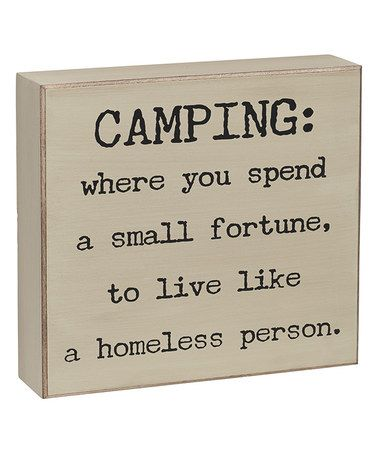 RV’ing can be an inexpensive and safe way to take a vacation at home or abroad. You’ll be able to experience things one is unable to experience by driving a car or flying to “a destination” for the purpose of vacationing. With an RV, one can experience practically everything your route has to offer and, you don’t have to necessarily use camp grounds when you’re ready to sleep. You will be surprised at how easy it is to find free places to park for the night. Here are some suggestions for places to park your motor home.
RV’ing can be an inexpensive and safe way to take a vacation at home or abroad. You’ll be able to experience things one is unable to experience by driving a car or flying to “a destination” for the purpose of vacationing. With an RV, one can experience practically everything your route has to offer and, you don’t have to necessarily use camp grounds when you’re ready to sleep. You will be surprised at how easy it is to find free places to park for the night. Here are some suggestions for places to park your motor home.
